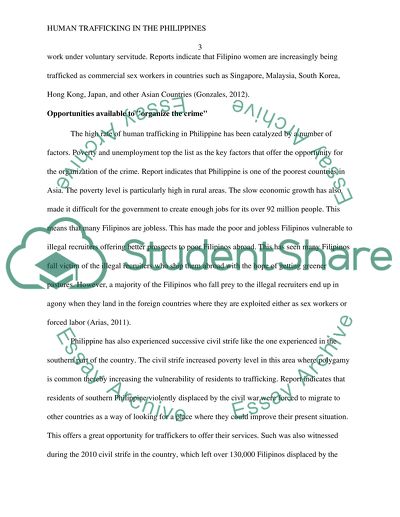Cite this document
(“Human Trafficking in the Philippines Research Paper”, n.d.)
Retrieved from https://studentshare.org/law/1478593-girls-for-sale
Retrieved from https://studentshare.org/law/1478593-girls-for-sale
(Human Trafficking in the Philippines Research Paper)
https://studentshare.org/law/1478593-girls-for-sale.
https://studentshare.org/law/1478593-girls-for-sale.
“Human Trafficking in the Philippines Research Paper”, n.d. https://studentshare.org/law/1478593-girls-for-sale.


